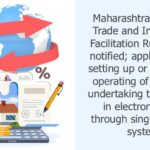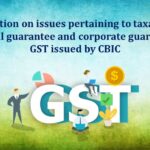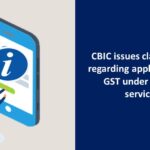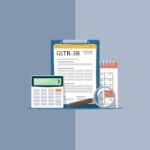Central Board of Indirect Taxes and Customs (CBIC) has issued Circular No. 125/2019 dated 18th November, 2019 to provide clarification regarding fully electronic refund process through FORM GST RFD-01 and single disbursement.
Key Points of the Circular are:
- The refund application has become fully electronic with effect from 26th September, 2019 in which all the steps of submission and processing of refunds shall be undertaken electronically, the provisions of the earlier Circulars relating to refund (Circular No. 17/17/2017-GST dated 15.11.2017, 24/24/2017-GST dated 21.12.2017, 37/11/2018-GST dated 15.03.2018, 45/19/2018-GST dated 30.05.2018, 59/33/2018-GST dated 04.09.2018, 70/44/2018-GST dated 26.10.2018, 79/53/2018-GST dated 31.12.2018 and 94/13/2019-GSTdated 28.03.2019) shall continue to apply for all refund applications filed on common portal before 26.09.2019 and the said applications shall continue to be processed manually as prior to deployment of new system.
2. The applications for the following types of refunds shall be filed in FORM GST RFD-01 on the common portal and the same shall be processed electronically with effect from 26.09.2019.
- Refund of unutilized input tax credit (ITC) on account of exports without payment of tax;
- Refund of tax paid on export of services with payment of tax;
- Refund of unutilized ITC on account of supplies made to SEZ Unit/SEZ Developer without payment of tax;
- Refund of tax paid on supplies made to SEZ Unit/SEZ Developer with payment of tax;
- Refund of unutilized ITC on account of accumulation due to inverted tax structure;
- Refund to supplier of tax paid on deemed export supplies;
- Refund to recipient of tax paid on deemed export supplies;
- Refund of excess balance in the electronic cash ledger;
- Refund of excess payment of tax;
- Refund of tax paid on intra-State supply which is subsequently held to be inter-State supply and vice versa;
- Refund on account of assessment/provisional assessment/appeal/any other order;
- Refund on account of “any other” ground or reason
3. The following modalities shall be followed for all refund applications filed in FORM GST RFD-01 on the common portal with effect from 26.09.2019 –
- FORM GST RFD-01 shall be filled on the common portal by an applicant seeking refund under any of the categories mentioned above and a comprehensive list of documents as mentioned in the Annexure A ( herewith attached) shall be required to be provided by the applicant. And no other documents needs to be provided by the applicant at any stage. An applicant shall upload the documents that should be each of maximum 5MB and neither the refund application in Form GST RFD-01 nor any other supporting documents shall be required to be physically submitted to the jurisdictional proper officer.
- The Application Reference number (ARN) will be generated only after the applicant has completed the process of filing the refund application in FORM GST RFD-01 and has completed uploading of all the supporting documents/ undertaking/ statements/invoices and, where required, the amount has been debited from the electronic credit/cash ledger.
- As soon as the ARN is generated, the refund application along with all the supporting documents shall be transferred electronically to the jurisdictional proper officer who shall be able to view it on the system.
- Accordingly, the acknowledgement for the complete application (FORM GST RFD-02) or deficiency memo (FORM GST RFD-03), as the case may be, would be issued electronically by the jurisdictional tax officer based on the documents so received from the common portal.
4. It has also been clarified that any refund claim for a tax period may be filed only after furnishing all the returns in FORM GSTR-1 and FORM GSTR-3B which were due to be furnished on or before the date on which the refund application is being filed.
5. It has also been clarified that the applicants applying for refund must give an undertaking that should be submitted electronically to the effect that the amount of refund sanctioned would be paid back to the Government with interest in case it is found subsequently that the requirements of clause (c) of sub-section (2) of section 16 read with sub-section (2) of section 42 of the CGST Act have not been complied with in respect of the amount refunded. This undertaking should be submitted electronically along with the refund claim.
6. The applicant, at his option, may file a refund claim for a tax period or by clubbing successive tax periods. The period for which refund claim has been filed, however, cannot spread across different financial years.
7. Refund claims under categories listed at (a), (c) and (e) in para 2 above pertaining to unutilized credits must be filed by the applicant chronologically. This means that an applicant, after submitting a refund application under any of these categories for a certain period, shall not be subsequently allowed to file a refund claim under the same category for any previous period. This principle / limitation, however, shall not apply in cases where a fresh application is being filed pursuant to a deficiency memo having been issued earlier.
8. It is further clarified that once an application has been submitted afresh, pursuant to a deficiency memo, the proper officer will not serve another deficiency memo with respect to the application for the same period, unless the deficiencies pointed out in the original deficiency memo remain un-rectified, either wholly or partly, or any other substantive deficiency is noticed subsequently. The same shall shall also have to be submitted within 2 years of the relevant date, as defined in the explanation after sub-section (14) of section 54 of the CGST Act.
9. It is clarified that in such cases, the proper officer shall refund on a provisional basis ninety percent of the refundable amount of the claim (amount of refund claim less the inadmissible portion of refund so found) in accordance with the provisions of rule 91 of the CGST Rules. Final sanction of refund shall be made in accordance with the provisions of rule 92 of the CGST Rules.
10. Further, detailed guidelines covering various types of refunds claims which may be followed while scrutinizing refund claims for completeness and eligibility has been laid down as under:
- In cases where while filing the return in FORM GSTR-3B for a tax period, certain registered persons committed errors in declaring the export of services on payment of integrated tax or zero-rated supplies made to a SEZ developer or a SEZ Unit on payment of Integrated Tax. Such supplies where shown in the Table under column 3.1(a) instead of showing them in column 3.1(b) of FORM GSTR-3B whilst they have shown the correct details in Table 6A or 6B of FORM GSTR-1 for the relevant tax period. Such registered persons were earlier unable to file the refund application in FORM GST RFD-01A. In this regard, it is clarified that for the tax periods commencing from 01.07.2017 to 30.06.2019, such registered persons shall be allowed to file the refund application in FORM GST RFD-01 on the common portal subject to the condition that the amount of refund of integrated tax/cess claimed shall not be more than the aggregate amount of integrated tax/cess mentioned in the Table under columns 3.1(a), 3.1(b) and 3.1(c) of FORM GSTR-3B filed for the corresponding tax period.
- It has also been clarified that now onwards a refund application assigned to a Central tax officer, both the sanction order (FORM GST RFD-04/06) and the corresponding payment order (FORM GST RFD-05) for the sanctioned refund amount, under all tax heads, shall be issued by the Central tax officer only. Similarly, for refund applications assigned to a State/UT tax officer, both the sanction order (FORM GST RFD-04/06) and the corresponding payment order (FORM GST RFD-05) for the sanctioned refund amount, under all tax heads, shall be issued by the State/UT tax officer only.
- Applicants of refunds of unutilized ITC, i.e. refunds pertaining to items listed at (a), (c) and (e) in para 2 above, shall have to upload a copy of FORM GSTR-2A for the relevant period for which the refund is claimed. Also, such applicants shall upload the details of all the invoices on the basis of which input tax credit has been availed during the relevant period for which the refund is being claimed, in the format enclosed as Annexure-B (herewith attached) along with the application for refund claim. Self-certified copies of invoices in relation to which the refund of ITC is being claimed and which are declared as eligible for ITC in Annexure – B, but which are not populated in FORM GSTR-2A, shall be uploaded by the applicant along with the application in FORM GST RFD 01.
- It has been clarified that the transitional credit pertains to duties and taxes paid under the existing laws viz., under Central Excise Act, 1944 and Chapter V of the Finance Act, 1994, the same cannot be said to have been availed during the relevant period and thus, cannot be treated as part of ‘Net ITC’ and thus no refund of such unutilized transitional credit is admissible.
- It has been clarified that both the law and the related rules clearly prevent the refund of tax paid on input services and capital goods as part of refund of input tax credit accumulated on account of inverted tax structure as the inputs do not include services or capital goods and hence the intent of the law is not to allow refund of tax paid on input services or capital goods as part of refund of unutilized input tax credit.
For further details please refer the attached documents.
Source: Central Board of Indirect Taxes & Customs




